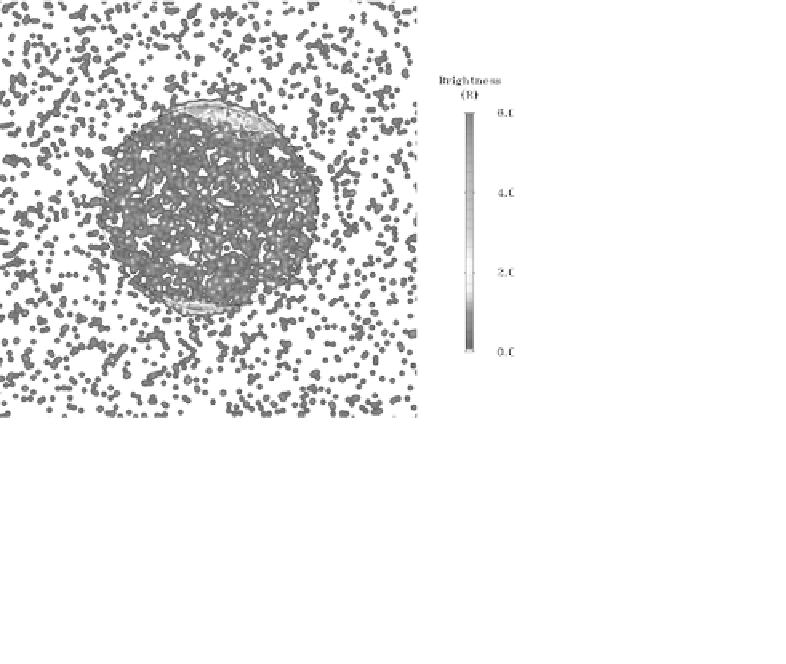Geoscience Reference
In-Depth Information
resolution; as such, it is a powerful diagnostic tool in the study of cosmic
X-ray sources, from distant active galaxies to planets in our own solar
system; a tool which has opened new perspectives on the Universe. Here
we report on two recent
XMM-Newton
observations of Jupiter.
Jupiter was first detected at X-ray energies with the
Einstein
Observatory
,
2
and was later studied with
ROSAT
.
3
-
5
Chandra
HRC-I obser-
vations (Fig. 1) provide the clearest view yet of the planet's X-ray emission:
they reveal two bright, high-latitude sources associated with the aurorae,
as well as low-latitude emission from the planet's disk.
6
,
7
Moreover, strong
45 min quasi-periodic X-ray oscillations were discovered by
Chandra
in the
North auroral spot in December 2000. No correlated periodicity was seen
atthetimein
Cassini
solar wind data, nor in
Galileo
and
Cassini
energetic
particle and plasma wave measurements.
Two possible origins (both involving charge exchange) have been pro-
posed for Jupiter's X-ray auroral emissions: energetic (
>
1 MeV/nucleon) S
and O ions from the outer magnetosphere, or highly ionized, but low energy,
solar wind ions, entering the polar/auroral regions along field lines; in both
cases acceleration by field-aligned potentials is required.
7
,
8
Oscillations in
brightness may arise from processes related to the magnetosphere (such as
Fig. 1.
Chandra
HRC-I image of Jupiter (December 18, 2000), clearly separating the
polar, auroral X-ray sources, and the low-latitude disk X-ray emission. The scale bar is
in units of Rayleighs (R).









